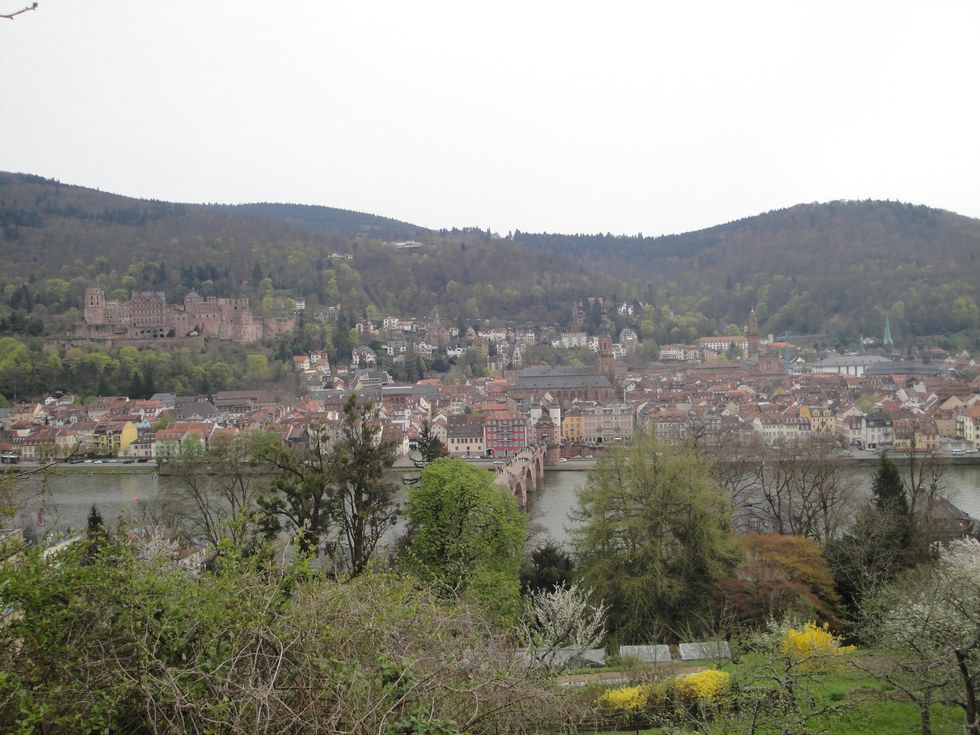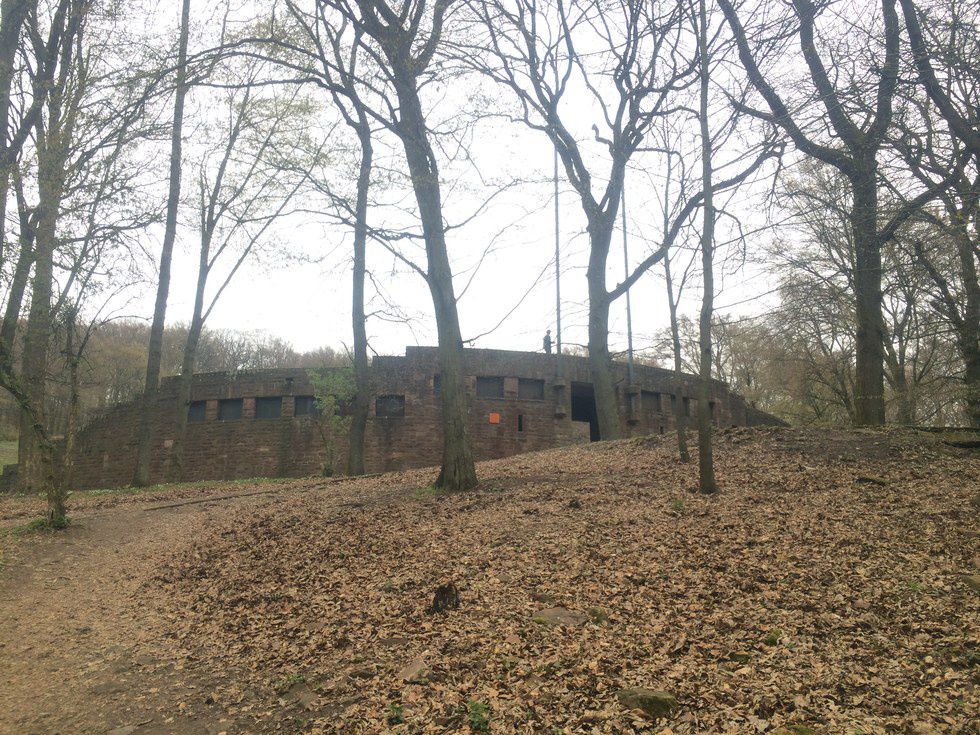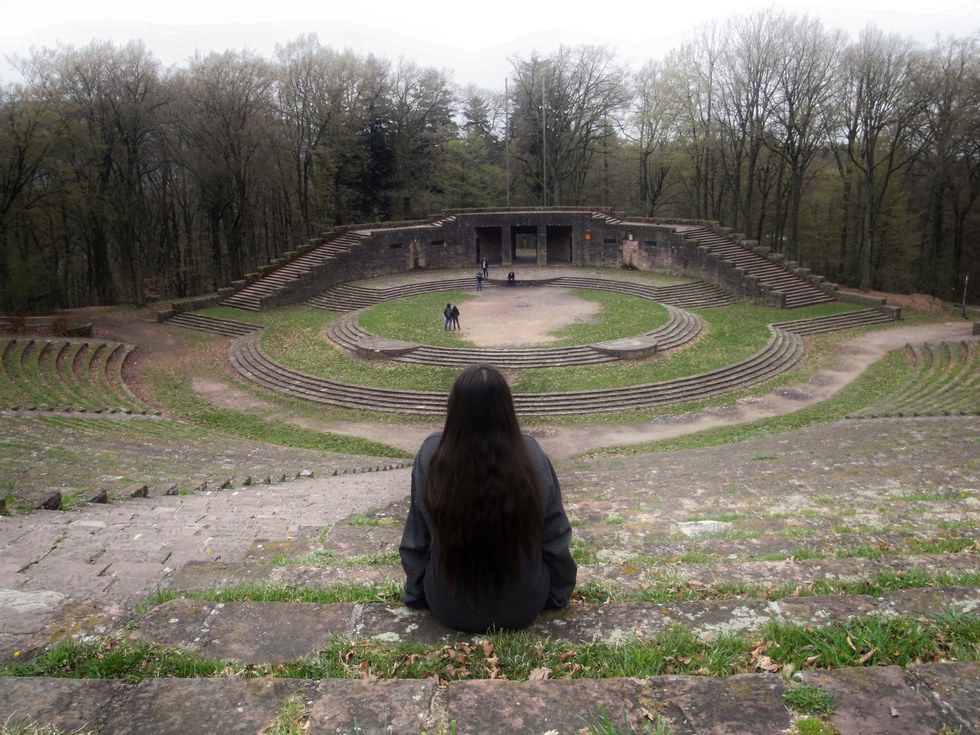Heidelberg is a city that is firmly rooted in its romantic past. The city seems straight out of a fairy tale with famous visitors such as Mark Twain and Johann Wolfgang von Goethe. A 16th century castle in ruins provides a picturesque background to its many tourists. In many ways, it is all of that. But this German town has a dark history that few tourists know about.
In the 1930s, as Hitler was rapidly ascending to power, the Nazi party planned to build nearly 400 open-air theaters across the nation. These were intended to host grand displays of propaganda for the German people. It was believed that these outdoor rally grounds would bring people together on a more local level as opposed to the large rallies of Nuremburg. However, only around 45 such theaters were built before the war began.
Heidelberg’s rally theater was constructed in 1935 and designed to seat nearly 30,000. That came true in June of that year when Joseph Goebbels, the Reich Minister of Propaganda, spoke at the Heidelberg theater. With his words, Goebbels immortalized the location by calling it a "veritable church of the Reich” and compared it to the creation of the autobahn.
Yet after that fateful rally, the theater became abandoned. A few revival projects tried to restore the theater for use but the Germans wanted nothing to do with it. After World War II began, the theater fell into disuse and repair. There was only one road to the theater and rainy conditions made it difficult to reach. Lack of use caused the surrounding nature to grow uninhibited. The trees soon obstructed the view of the city and cut off the theater from civilization for good.
The city of Heidelberg claimed ownership of the property some years later and paved the road for easier access. They intended to hold concerts and services there. However, the 1980s brought about an era of change. It was no longer an abandoned theater where German teens traveled to for a night of uninterrupted drinking. A group of people began to hold ceremonies for “Walpurgisnacht”, or “Witches Night”. Instead of swastikas and Hitler salutes, the theater now lit up with burning torches and witchcraft.
Unfortunately, this association with witchcraft and black magic has deterred many locals from venturing up the steep hill to the theater. With the history of Nazi Socialism and the current association of witchcraft, most Germans try to forget that the theater even exists. But as soon as I found out that there was a hidden Nazi theater just up the hill from where I was living, my friend Laura and I made it our mission one Saturday to find it.
In Heidelberg, there is a famous hiking path called Philosopher’s Way that snakes up the mountain. At the top of the path, there is a small dirt trail that is the most direct way to access the old theater. Laura and I were unable to find the marked trail for a long ways so we resorted to climbing straight up the mountain until we eventually came upon the correct trail. From that point on, we followed blue castles painted on trees until we saw the ruins in the distance.
I cautiously stepped through the same doorway that Goebbels walked through 80 years before and stopped dead in my tracks. Green grass had reclaimed the theater and was woven between every stone. The uneven steps stretched far up the mountain and my position front and center stage made me feel as though I was ready to address a crowd of thousands. This was a feeling unlike any other I had ever experienced. I had no idea that such an immense theater could be hidden so close to home.
The bleary April weather combined with morning rain created the perfect backdrop for us to explore the theater. We hiked all the way to the top and watched the few other hikers walk around the complex. One man even rode his mountain bike straight down the stairs as though it was completely natural. I was perplexed at how some people thought this location was cursed, whereas others viewed it as a playground.
As the crowds began to dissipate throughout the afternoon, an eerie feeling began to settle over the area. I couldn’t quite debunk what exactly was causing that feeling. Maybe it was because we were alone in an old outdoor theater as the sun was setting. Or maybe there was still some residual energy reverberating throughout the area from Goebbel’s captivating propaganda speech. Regardless, standing there surrounded by history is such an incredible feeling. You are able to visualize what happened there so many decades ago… and it makes you appreciate how life is no longer the same as it once was.
On the way back down the hill towards Heidelberg, a lone Nazi watchtower stands guard over the city. It is hidden from view while in the city but it boasts a commanding view over the castle. The door is usually open and you can even climb up to the top. From there, you can see the side of Heidelberg that most people see. Quaint, romantic, and beautiful. But high in the hills remains a dark part of Heidelberg’s past… that is also a reminder to look forward to the future.











 The minimum wage is not a living wage.
StableDiffusion
The minimum wage is not a living wage.
StableDiffusion
 influential nations
StableDiffusion
influential nations
StableDiffusion












